-

Nov
21
Washington Roundup – November 2025

On November 12th, President Trump signed legislation ending the longest government shutdown on record. Democrats and Republicans had been at an impasse since the shutdown began, but negotiators were ultimately successful in getting a package to pass the Senate by a filibuster proof margin. The House quickly moved to approve the Senate legislation sending the bill to the White House for signature.
Read more
-

Nov
18
The Giving Herd - ASAS Foundation Newsletter - November 2025
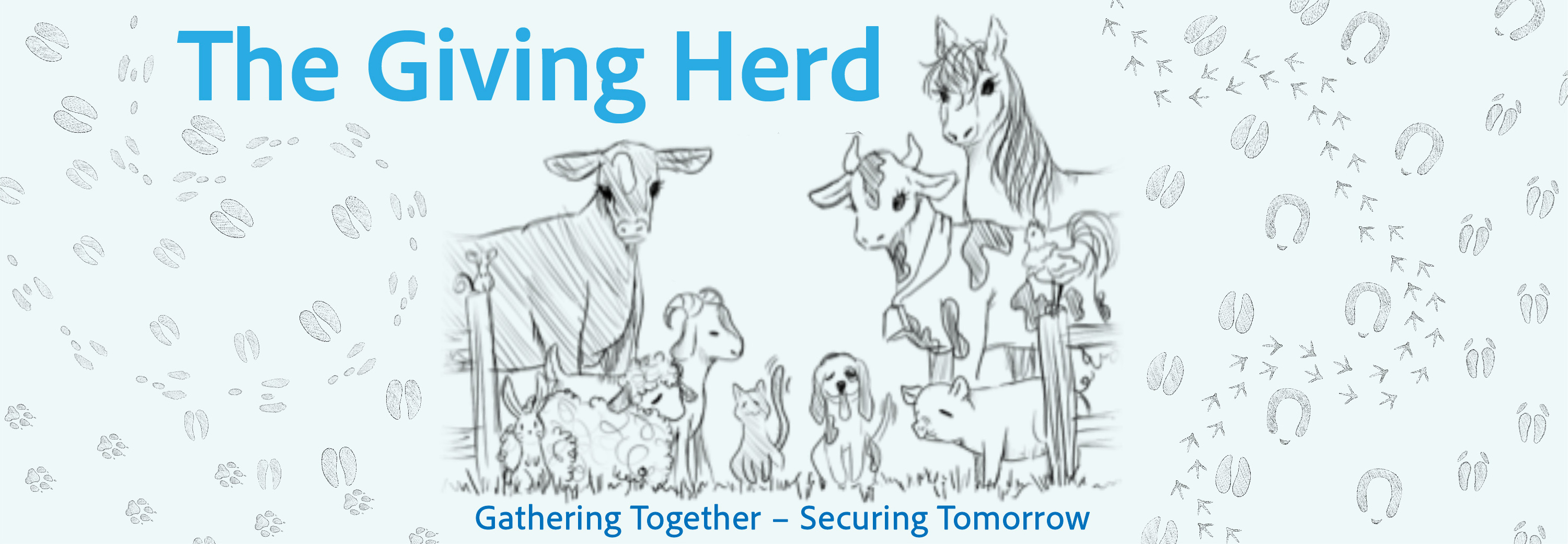
The November Edition of The Giving Herd, an ASAS Foundation Newsletter
Read more
-

Nov
18
Dr. George Fahey's Animal Science Journey

George Fahey's Animal Science Journey
Read more
-

Nov
13
Interpretive Summary: Persistence of subacute ruminal acidosis across first and second lactations in dairy cows based on reticular pH metrics and microbiota, and systemic health responses

Subacute rumen acidosis (SARA) is a common dairy herd health issue. Variation among cows in the severity of SARA is a chance to understand the etiology of SARA and prevent the disease. The aim of this study was to determine the relationship between the severities of SARA in the first lactation with that in the second lactation in terms of reticular pH metrics, microbiota and systemic health.
Read more
-

Nov
13
Interpretive Summary: The effect of fumaric acid on ruminant enteric methane emission and ruminal volatile fatty acids concentration: a meta-analysis
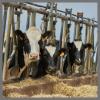
Fumaric acid can be supplemented in the ruminants’ diets without compromising DMI. However, reductions in methane production and yield were observed only in small ruminant (sheep and goats), whoever FA supplementation appears to be less effective in mitigating methane emissions in cattle.
Read more
-

Nov
13
Interpretive Summary: On-top arginine supplementation during lactation affects milk composition, performance, and intestinal bacterial and viral microbial community of sows and their piglets
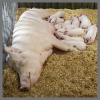
The gut microbiome, which is made up of bacteria, viruses, and fungi, plays a crucial role in the development of a newborn’s digestive and immune systems. The composition of this microbiome is influenced by several factors, including the diet of the mother. This study focused on how supplementing the diet of lactating sows with a specific amino acid, i.e. arginine (Arg), can affect the growth and health of piglets, as well as their gut microbiome.
Read more
-

Nov
13
Interpretive Summary: Effects of hydrolyzed yeast on weanling pig growth performance, fecal dry matter, and stress-related blood antioxidant criteria
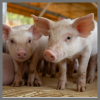
Feed-grade medications have been widely used in swine production due to their ability to treat a diagnosed pathogen challenge, regulate gut microbiota, promote growth, enhance feed efficiency, and reduce inflammation. Due to concerns of bacterial resistance, some feed-grade medications have been restricted as a growth promotor in some countries.
Read more
-

Nov
13
Interpretive Summary: Assessment of dietary spirulina supplementation on growth performance, nutrient digestibility, and intestinal health in lipopolysaccharide-challenged weanling pigs

Weanling pigs are highly susceptible to intestinal health challenges caused by harmful bacterial agents, which can trigger inflammation and weaken intestinal epithelial integrity. However, research on the potential benefits of dietary spirulina as a bioactive feed additive for improving gut health in weanling pigs remains limited.
Read more
-

Nov
13
Interpretive Summary: Variability in cognitive strategies in a numerical discrimination task: individual and comparative insights from day-old domestic chicks (Gallus gallus)

Numerical abilities play a fundamental role in survival by enabling animals to assess resources and make adaptive decisions. Among these, numerical discrimination, the capability to distinguish between larger and smaller numerosities, is highly studied. Numerical discrimination can be solved using two strategies: the absolute, selecting a specific numerosity, or the relative, identifying the larger or smaller one.
Read more
-

Nov
13
Interpretive Summary: Genomic study for pregnancy loss in Brahman cattle
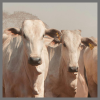
Pregnancy loss (PL) is a major contributor to reproductive inefficiency in beef cattle operations and carries significant economic implications for producers. Although management and environmental factors are known to influence pregnancy maintenance, the genetic factors contributing to PL remain poorly understood, particularly in Bos indicus-influenced breeds.
Read more
-

Nov
06
Interpretive Summary: Impact of dietary supplementation of beef cows with rumen-protected methionine during the periconceptional period on post-weaning performance of female offspring
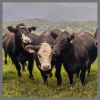
This study examined the effects of supplementing rumen-protected methionine (RP-Met) during the periconceptional period on post-weaning traits of female offspring. A total of 114 beef cows were randomly assigned to a control (CON; no RP-Met) and RP-Met treatment.
Read more
-

Nov
06
Interpretive Summary: Optimizing the performance of large genomic evaluations through data truncation in Angus cattle
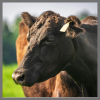
Recent advances in animal breeding and genetics have made it possible to combine records, genotypes, and pedigree into a single input for predicting breeding values, making genomic evaluations easier and more efficient. However, large genomic models remain computationally expensive.
Read more
-

Nov
06
Interpretive Summary: The effect of Methylococcus capsulatus in mono- or co-culture with Methanobrevibacter smithii or with mixed rumen fluid on bacterial growth and methane gas production
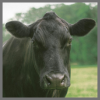
This study investigated the impact of Methylococcus capsulatus, mixed with or without purified bacterial strains or mixed rumen fluid, on feeding grass-based and/or grain-based diet rations, as well as changes in bacterial cells, rumen fermentation rates, gas production, and rumen microbiota in in vitro and continuous culture. Three experiments were carried out using in vitro ANKUM gas production systems (Exp. 1 and 2) and continuous recirculating flux chamber systems (Exp. 3).
Read more
-

Nov
06
Interpretive Summary: Effects of Spray-Dried Plasma on Nutrient Digestibility, Fecal Metabolites, Microbiota, and Immune and Inflammatory Biomarkers in Adult Dogs

This study evaluated the effects of incorporating spray-dried porcine plasma (SDP) into extruded dog diets. Spray-dried plasma is a functional protein ingredient rich in bioactive compounds that may support digestion, gut health, and immune function.
Read more
-

Nov
06
Interpretive Summary: Digestibility and Palatability of Extruded Dog Food with Aspergillus oryzae Fermented Soybean Meal and its Influence on Colonic Fermentation Indicators

The utilization of traditional soybean meal in pet food has been limited by its low methionine content and flatulence-causing oligosaccharides. Microbially enhanced soybean protein and Aspergillus oryzae fermented soybean meal (F-SBM) are bioprocessed soybean meal products with potentially improved nutritional value.
Read more
-

Nov
06
Interpretive Summary: Both elevated lipopolysaccharide and D-lactic acid concentrations in blood contribute to systemic inflammation in acute ruminal acidosis
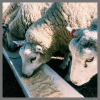
Acute ruminal acidosis (ARA) is a detrimental metabolic digestive disorder in ruminants, triggered by sudden intake of high-concentrate diets such as corn and wheat flour. This condition leads to a sharp drop in rumen pH and excessive accumulation of fermentation products like L-lactic acid, D-lactic acid, and lipopolysaccharides (LPS), which can enter the bloodstream.
Read more
-

Oct
30
Washington Roundup – October 2025

Congress remains at an impasse regarding reopening the federal government. The House of Representatives passed a continuing resolution that would keep the government funded through November 21st. Since that time, the Senate has failed to pass the continuing resolution, failing on largely party line votes each time it has been considered.
Read more
-

Oct
23
Interpretive Summary: Seeking interdisciplinary solutions at the interface of animal, human, plant, and environmental health

Human beings have interacted with flora and fauna in their shared environment throughout history. These relationships—necessary for food, shelter, and companionship—reflect a deep connection with both living and nonliving elements in our world. Societal progress, however, has altered our interactions with animals, plants, and the environment.
Read more
-

Oct
23
Interpretive Summary: The One Health approach: reinventing our past knowledge to provide a sustainable future

For centuries, native and indigenous populations around the globe interacted with their surroundings as part of their daily live routines to hunt and harvest for nourishment, to celebrate, and to survive. They understood that their actions had major consequences on crops, animals, rivers, and forests.
Read more
-

Oct
23
Interpretive Summary: An animal interest approach method as a gateway to a one health educated pipeline
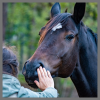
Animal science is the study of the biology, care, and management of animals, focusing on their health, behavior, nutrition, physiology, and breeding. Animal science has a critical role in One Health, which emphasizes the interconnectedness of human, animal, plant, and environmental health. In this context, animal science helps ensure the well-being of livestock, pets, and wildlife, the maintenance of a safe food supply, and the reduction of zoonotic disease outbreaks, while contributing to environmental sustainability.
Read more
 NovWashington Roundup – November 2025
NovWashington Roundup – November 2025 On November 12th, President Trump signed legislation ending the longest government shutdown on record. Democrats and Republicans had been at an impasse since the shutdown began, but negotiators were ultimately successful in getting a package to pass the Senate by a filibuster proof margin. The House quickly moved to approve the Senate legislation sending the bill to the White House for signature.
On November 12th, President Trump signed legislation ending the longest government shutdown on record. Democrats and Republicans had been at an impasse since the shutdown began, but negotiators were ultimately successful in getting a package to pass the Senate by a filibuster proof margin. The House quickly moved to approve the Senate legislation sending the bill to the White House for signature. NovThe Giving Herd - ASAS Foundation Newsletter - November 2025
NovThe Giving Herd - ASAS Foundation Newsletter - November 2025 The November Edition of The Giving Herd, an ASAS Foundation Newsletter
The November Edition of The Giving Herd, an ASAS Foundation Newsletter NovDr. George Fahey's Animal Science Journey
NovDr. George Fahey's Animal Science Journey George Fahey's Animal Science Journey
George Fahey's Animal Science Journey NovInterpretive Summary: Persistence of subacute ruminal acidosis across first and second lactations in dairy cows based on reticular pH metrics and microbiota, and systemic health responses
NovInterpretive Summary: Persistence of subacute ruminal acidosis across first and second lactations in dairy cows based on reticular pH metrics and microbiota, and systemic health responses Subacute rumen acidosis (SARA) is a common dairy herd health issue. Variation among cows in the severity of SARA is a chance to understand the etiology of SARA and prevent the disease. The aim of this study was to determine the relationship between the severities of SARA in the first lactation with that in the second lactation in terms of reticular pH metrics, microbiota and systemic health.
Subacute rumen acidosis (SARA) is a common dairy herd health issue. Variation among cows in the severity of SARA is a chance to understand the etiology of SARA and prevent the disease. The aim of this study was to determine the relationship between the severities of SARA in the first lactation with that in the second lactation in terms of reticular pH metrics, microbiota and systemic health. NovInterpretive Summary: The effect of fumaric acid on ruminant enteric methane emission and ruminal volatile fatty acids concentration: a meta-analysis
NovInterpretive Summary: The effect of fumaric acid on ruminant enteric methane emission and ruminal volatile fatty acids concentration: a meta-analysis Fumaric acid can be supplemented in the ruminants’ diets without compromising DMI. However, reductions in methane production and yield were observed only in small ruminant (sheep and goats), whoever FA supplementation appears to be less effective in mitigating methane emissions in cattle.
Fumaric acid can be supplemented in the ruminants’ diets without compromising DMI. However, reductions in methane production and yield were observed only in small ruminant (sheep and goats), whoever FA supplementation appears to be less effective in mitigating methane emissions in cattle. NovInterpretive Summary: On-top arginine supplementation during lactation affects milk composition, performance, and intestinal bacterial and viral microbial community of sows and their piglets
NovInterpretive Summary: On-top arginine supplementation during lactation affects milk composition, performance, and intestinal bacterial and viral microbial community of sows and their piglets The gut microbiome, which is made up of bacteria, viruses, and fungi, plays a crucial role in the development of a newborn’s digestive and immune systems. The composition of this microbiome is influenced by several factors, including the diet of the mother. This study focused on how supplementing the diet of lactating sows with a specific amino acid, i.e. arginine (Arg), can affect the growth and health of piglets, as well as their gut microbiome.
The gut microbiome, which is made up of bacteria, viruses, and fungi, plays a crucial role in the development of a newborn’s digestive and immune systems. The composition of this microbiome is influenced by several factors, including the diet of the mother. This study focused on how supplementing the diet of lactating sows with a specific amino acid, i.e. arginine (Arg), can affect the growth and health of piglets, as well as their gut microbiome. NovInterpretive Summary: Effects of hydrolyzed yeast on weanling pig growth performance, fecal dry matter, and stress-related blood antioxidant criteria
NovInterpretive Summary: Effects of hydrolyzed yeast on weanling pig growth performance, fecal dry matter, and stress-related blood antioxidant criteria Feed-grade medications have been widely used in swine production due to their ability to treat a diagnosed pathogen challenge, regulate gut microbiota, promote growth, enhance feed efficiency, and reduce inflammation. Due to concerns of bacterial resistance, some feed-grade medications have been restricted as a growth promotor in some countries.
Feed-grade medications have been widely used in swine production due to their ability to treat a diagnosed pathogen challenge, regulate gut microbiota, promote growth, enhance feed efficiency, and reduce inflammation. Due to concerns of bacterial resistance, some feed-grade medications have been restricted as a growth promotor in some countries. NovInterpretive Summary: Assessment of dietary spirulina supplementation on growth performance, nutrient digestibility, and intestinal health in lipopolysaccharide-challenged weanling pigs
NovInterpretive Summary: Assessment of dietary spirulina supplementation on growth performance, nutrient digestibility, and intestinal health in lipopolysaccharide-challenged weanling pigs Weanling pigs are highly susceptible to intestinal health challenges caused by harmful bacterial agents, which can trigger inflammation and weaken intestinal epithelial integrity. However, research on the potential benefits of dietary spirulina as a bioactive feed additive for improving gut health in weanling pigs remains limited.
Weanling pigs are highly susceptible to intestinal health challenges caused by harmful bacterial agents, which can trigger inflammation and weaken intestinal epithelial integrity. However, research on the potential benefits of dietary spirulina as a bioactive feed additive for improving gut health in weanling pigs remains limited. NovInterpretive Summary: Variability in cognitive strategies in a numerical discrimination task: individual and comparative insights from day-old domestic chicks (Gallus gallus)
NovInterpretive Summary: Variability in cognitive strategies in a numerical discrimination task: individual and comparative insights from day-old domestic chicks (Gallus gallus) Numerical abilities play a fundamental role in survival by enabling animals to assess resources and make adaptive decisions. Among these, numerical discrimination, the capability to distinguish between larger and smaller numerosities, is highly studied. Numerical discrimination can be solved using two strategies: the absolute, selecting a specific numerosity, or the relative, identifying the larger or smaller one.
Numerical abilities play a fundamental role in survival by enabling animals to assess resources and make adaptive decisions. Among these, numerical discrimination, the capability to distinguish between larger and smaller numerosities, is highly studied. Numerical discrimination can be solved using two strategies: the absolute, selecting a specific numerosity, or the relative, identifying the larger or smaller one. NovInterpretive Summary: Genomic study for pregnancy loss in Brahman cattle
NovInterpretive Summary: Genomic study for pregnancy loss in Brahman cattle Pregnancy loss (PL) is a major contributor to reproductive inefficiency in beef cattle operations and carries significant economic implications for producers. Although management and environmental factors are known to influence pregnancy maintenance, the genetic factors contributing to PL remain poorly understood, particularly in Bos indicus-influenced breeds.
Pregnancy loss (PL) is a major contributor to reproductive inefficiency in beef cattle operations and carries significant economic implications for producers. Although management and environmental factors are known to influence pregnancy maintenance, the genetic factors contributing to PL remain poorly understood, particularly in Bos indicus-influenced breeds. NovInterpretive Summary: Impact of dietary supplementation of beef cows with rumen-protected methionine during the periconceptional period on post-weaning performance of female offspring
NovInterpretive Summary: Impact of dietary supplementation of beef cows with rumen-protected methionine during the periconceptional period on post-weaning performance of female offspring This study examined the effects of supplementing rumen-protected methionine (RP-Met) during the periconceptional period on post-weaning traits of female offspring. A total of 114 beef cows were randomly assigned to a control (CON; no RP-Met) and RP-Met treatment.
This study examined the effects of supplementing rumen-protected methionine (RP-Met) during the periconceptional period on post-weaning traits of female offspring. A total of 114 beef cows were randomly assigned to a control (CON; no RP-Met) and RP-Met treatment. NovInterpretive Summary: Optimizing the performance of large genomic evaluations through data truncation in Angus cattle
NovInterpretive Summary: Optimizing the performance of large genomic evaluations through data truncation in Angus cattle Recent advances in animal breeding and genetics have made it possible to combine records, genotypes, and pedigree into a single input for predicting breeding values, making genomic evaluations easier and more efficient. However, large genomic models remain computationally expensive.
Recent advances in animal breeding and genetics have made it possible to combine records, genotypes, and pedigree into a single input for predicting breeding values, making genomic evaluations easier and more efficient. However, large genomic models remain computationally expensive. NovInterpretive Summary: The effect of Methylococcus capsulatus in mono- or co-culture with Methanobrevibacter smithii or with mixed rumen fluid on bacterial growth and methane gas production
NovInterpretive Summary: The effect of Methylococcus capsulatus in mono- or co-culture with Methanobrevibacter smithii or with mixed rumen fluid on bacterial growth and methane gas production This study investigated the impact of Methylococcus capsulatus, mixed with or without purified bacterial strains or mixed rumen fluid, on feeding grass-based and/or grain-based diet rations, as well as changes in bacterial cells, rumen fermentation rates, gas production, and rumen microbiota in in vitro and continuous culture. Three experiments were carried out using in vitro ANKUM gas production systems (Exp. 1 and 2) and continuous recirculating flux chamber systems (Exp. 3).
This study investigated the impact of Methylococcus capsulatus, mixed with or without purified bacterial strains or mixed rumen fluid, on feeding grass-based and/or grain-based diet rations, as well as changes in bacterial cells, rumen fermentation rates, gas production, and rumen microbiota in in vitro and continuous culture. Three experiments were carried out using in vitro ANKUM gas production systems (Exp. 1 and 2) and continuous recirculating flux chamber systems (Exp. 3). NovInterpretive Summary: Effects of Spray-Dried Plasma on Nutrient Digestibility, Fecal Metabolites, Microbiota, and Immune and Inflammatory Biomarkers in Adult Dogs
NovInterpretive Summary: Effects of Spray-Dried Plasma on Nutrient Digestibility, Fecal Metabolites, Microbiota, and Immune and Inflammatory Biomarkers in Adult Dogs This study evaluated the effects of incorporating spray-dried porcine plasma (SDP) into extruded dog diets. Spray-dried plasma is a functional protein ingredient rich in bioactive compounds that may support digestion, gut health, and immune function.
This study evaluated the effects of incorporating spray-dried porcine plasma (SDP) into extruded dog diets. Spray-dried plasma is a functional protein ingredient rich in bioactive compounds that may support digestion, gut health, and immune function. NovInterpretive Summary: Digestibility and Palatability of Extruded Dog Food with Aspergillus oryzae Fermented Soybean Meal and its Influence on Colonic Fermentation Indicators
NovInterpretive Summary: Digestibility and Palatability of Extruded Dog Food with Aspergillus oryzae Fermented Soybean Meal and its Influence on Colonic Fermentation Indicators The utilization of traditional soybean meal in pet food has been limited by its low methionine content and flatulence-causing oligosaccharides. Microbially enhanced soybean protein and Aspergillus oryzae fermented soybean meal (F-SBM) are bioprocessed soybean meal products with potentially improved nutritional value.
The utilization of traditional soybean meal in pet food has been limited by its low methionine content and flatulence-causing oligosaccharides. Microbially enhanced soybean protein and Aspergillus oryzae fermented soybean meal (F-SBM) are bioprocessed soybean meal products with potentially improved nutritional value. NovInterpretive Summary: Both elevated lipopolysaccharide and D-lactic acid concentrations in blood contribute to systemic inflammation in acute ruminal acidosis
NovInterpretive Summary: Both elevated lipopolysaccharide and D-lactic acid concentrations in blood contribute to systemic inflammation in acute ruminal acidosis Acute ruminal acidosis (ARA) is a detrimental metabolic digestive disorder in ruminants, triggered by sudden intake of high-concentrate diets such as corn and wheat flour. This condition leads to a sharp drop in rumen pH and excessive accumulation of fermentation products like L-lactic acid, D-lactic acid, and lipopolysaccharides (LPS), which can enter the bloodstream.
Acute ruminal acidosis (ARA) is a detrimental metabolic digestive disorder in ruminants, triggered by sudden intake of high-concentrate diets such as corn and wheat flour. This condition leads to a sharp drop in rumen pH and excessive accumulation of fermentation products like L-lactic acid, D-lactic acid, and lipopolysaccharides (LPS), which can enter the bloodstream. OctWashington Roundup – October 2025
OctWashington Roundup – October 2025 Congress remains at an impasse regarding reopening the federal government. The House of Representatives passed a continuing resolution that would keep the government funded through November 21st. Since that time, the Senate has failed to pass the continuing resolution, failing on largely party line votes each time it has been considered.
Congress remains at an impasse regarding reopening the federal government. The House of Representatives passed a continuing resolution that would keep the government funded through November 21st. Since that time, the Senate has failed to pass the continuing resolution, failing on largely party line votes each time it has been considered. OctInterpretive Summary: Seeking interdisciplinary solutions at the interface of animal, human, plant, and environmental health
OctInterpretive Summary: Seeking interdisciplinary solutions at the interface of animal, human, plant, and environmental health Human beings have interacted with flora and fauna in their shared environment throughout history. These relationships—necessary for food, shelter, and companionship—reflect a deep connection with both living and nonliving elements in our world. Societal progress, however, has altered our interactions with animals, plants, and the environment.
Human beings have interacted with flora and fauna in their shared environment throughout history. These relationships—necessary for food, shelter, and companionship—reflect a deep connection with both living and nonliving elements in our world. Societal progress, however, has altered our interactions with animals, plants, and the environment. OctInterpretive Summary: The One Health approach: reinventing our past knowledge to provide a sustainable future
OctInterpretive Summary: The One Health approach: reinventing our past knowledge to provide a sustainable future For centuries, native and indigenous populations around the globe interacted with their surroundings as part of their daily live routines to hunt and harvest for nourishment, to celebrate, and to survive. They understood that their actions had major consequences on crops, animals, rivers, and forests.
For centuries, native and indigenous populations around the globe interacted with their surroundings as part of their daily live routines to hunt and harvest for nourishment, to celebrate, and to survive. They understood that their actions had major consequences on crops, animals, rivers, and forests. OctInterpretive Summary: An animal interest approach method as a gateway to a one health educated pipeline
OctInterpretive Summary: An animal interest approach method as a gateway to a one health educated pipeline Animal science is the study of the biology, care, and management of animals, focusing on their health, behavior, nutrition, physiology, and breeding. Animal science has a critical role in One Health, which emphasizes the interconnectedness of human, animal, plant, and environmental health. In this context, animal science helps ensure the well-being of livestock, pets, and wildlife, the maintenance of a safe food supply, and the reduction of zoonotic disease outbreaks, while contributing to environmental sustainability.
Animal science is the study of the biology, care, and management of animals, focusing on their health, behavior, nutrition, physiology, and breeding. Animal science has a critical role in One Health, which emphasizes the interconnectedness of human, animal, plant, and environmental health. In this context, animal science helps ensure the well-being of livestock, pets, and wildlife, the maintenance of a safe food supply, and the reduction of zoonotic disease outbreaks, while contributing to environmental sustainability.



